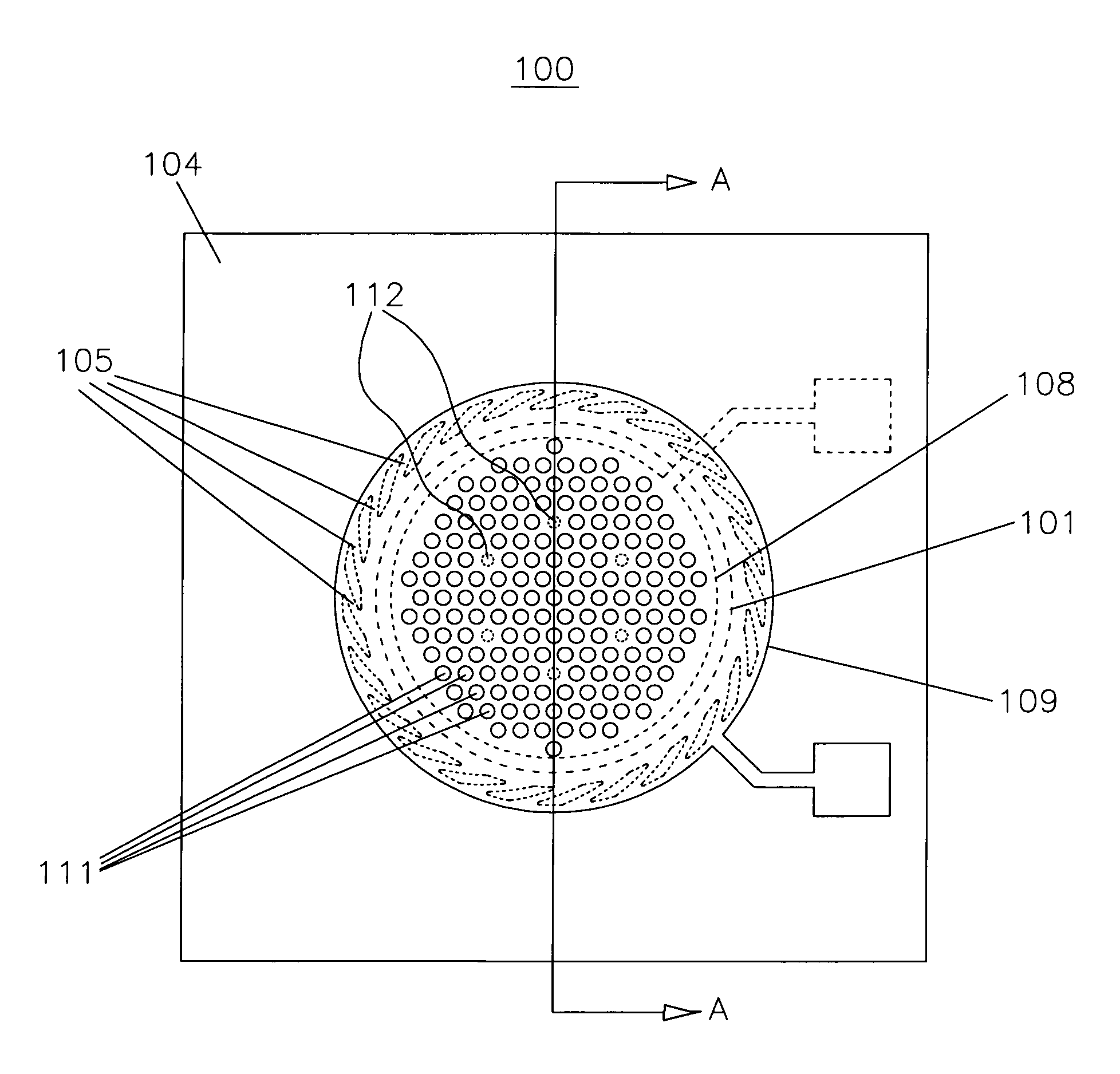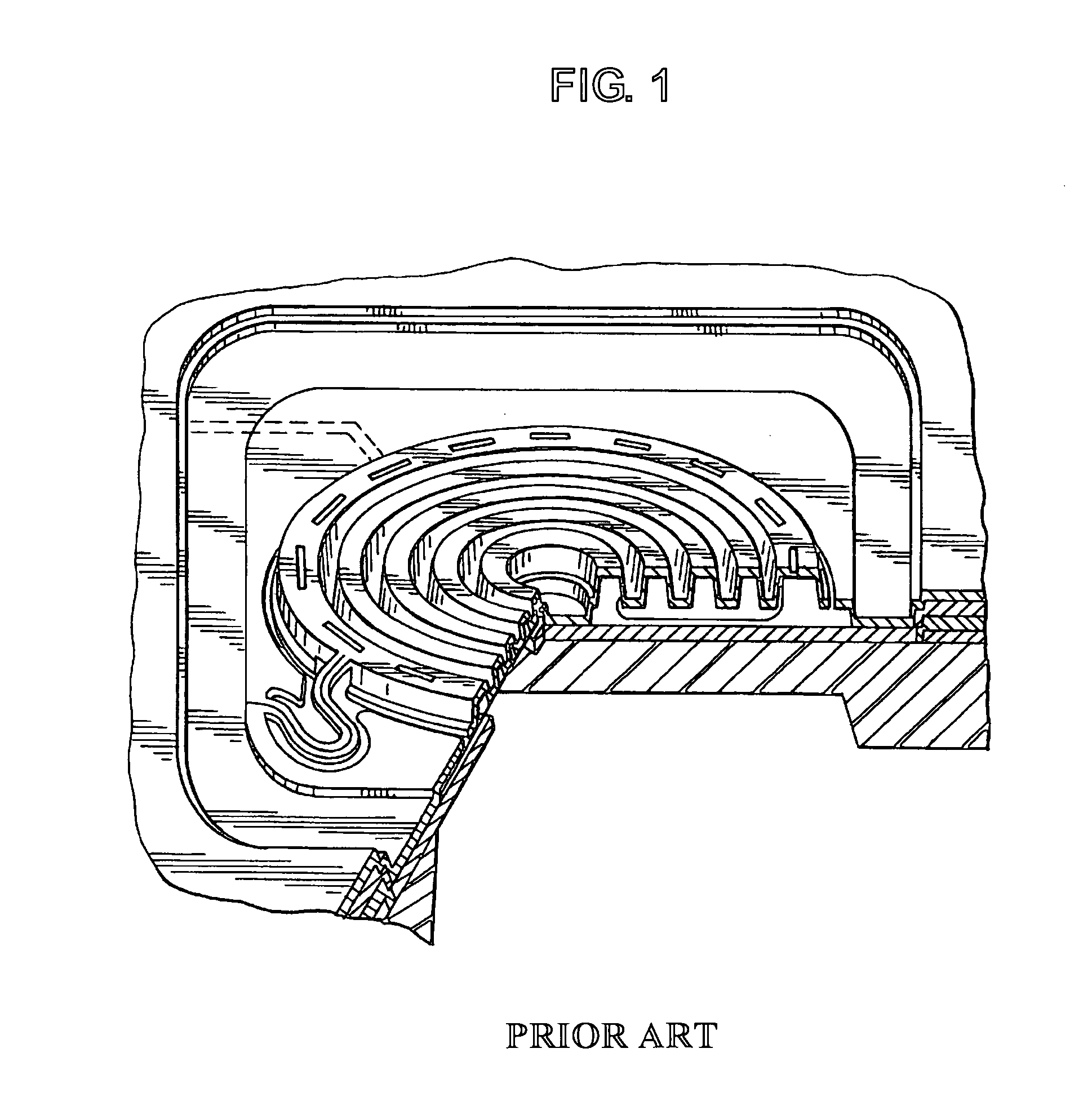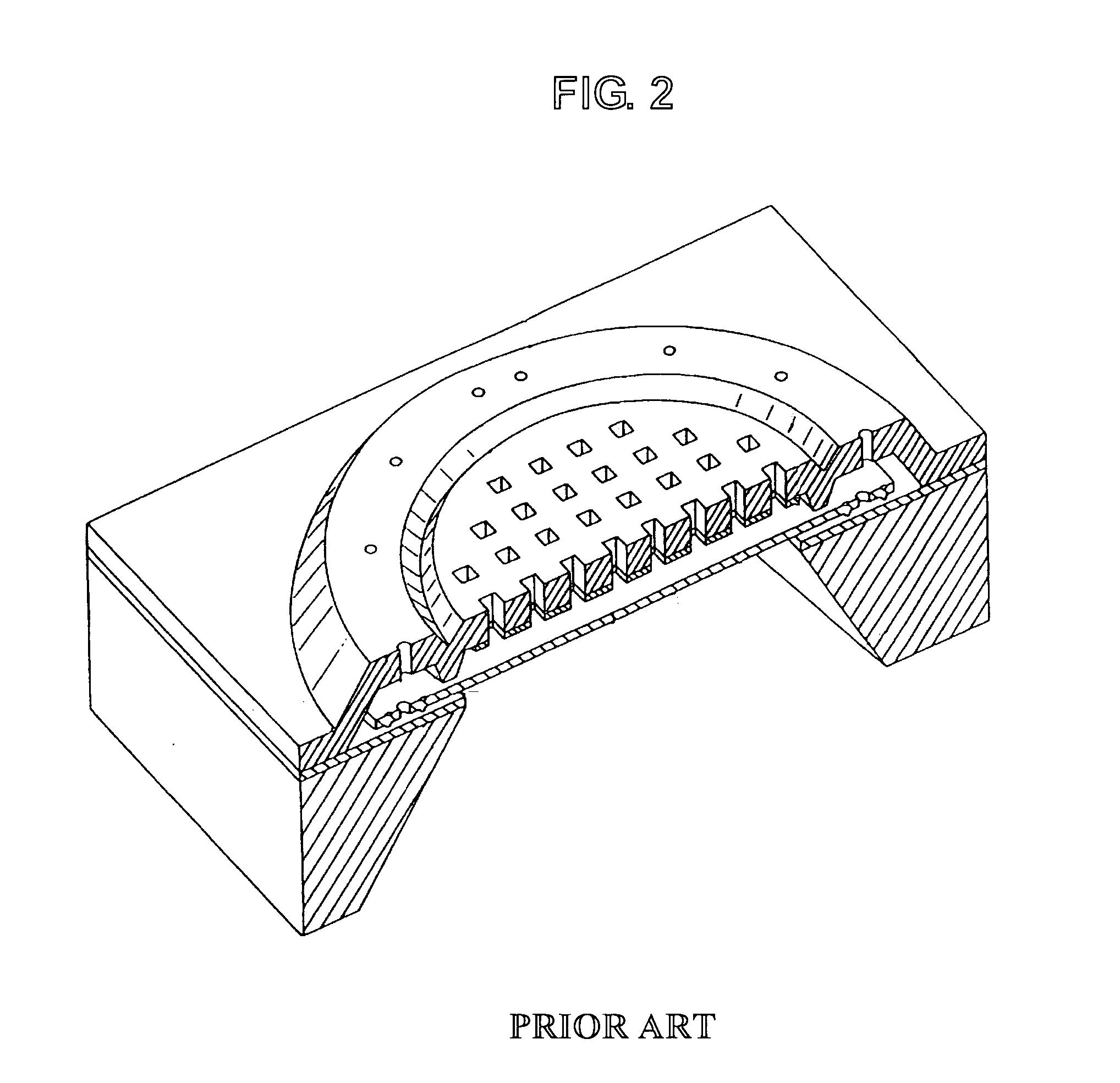Miniature capacitive acoustic sensor with stress-relieved actively clamped diaphragm
a capacitive diaphragm, active clamping technology, applied in the field of capacitive microphones, can solve the problems of fundamental problems in the control of diaphragm material properties and the like, and achieve the effects of minimizing fabrication cost, maximizing fabrication yield, and minimizing fabrication complexity
- Summary
- Abstract
- Description
- Claims
- Application Information
AI Technical Summary
Benefits of technology
Problems solved by technology
Method used
Image
Examples
Embodiment Construction
[0028]The present invention arises from the realization that the electrostatic attraction force, which is always present in a capacitive acoustic sensor structure, can be utilized in a specially designed structure to provide a clamping force of the diaphragm, which in turn can serve to flatten a diaphragm with intrinsic bow and provide for an effective acoustic seal between the diaphragm and the opposing clamping surface. A further important realization that applies to the present invention is that such a structure can be implemented using materials and fabrication processes that are entirely compatible with electronic circuit fabrication processes, such as CMOS, thereby allowing the fabrication of the acoustic sensor structure directly on substrates containing electronic circuitry.
[0029]A preferred embodiment of the acoustic sensor 100 according to the present invention is shown in top view in FIG. 6, cross-sectional view in FIG. 7, and three-dimensional cut-away view in FIG. 8. Th...
PUM
 Login to View More
Login to View More Abstract
Description
Claims
Application Information
 Login to View More
Login to View More - R&D
- Intellectual Property
- Life Sciences
- Materials
- Tech Scout
- Unparalleled Data Quality
- Higher Quality Content
- 60% Fewer Hallucinations
Browse by: Latest US Patents, China's latest patents, Technical Efficacy Thesaurus, Application Domain, Technology Topic, Popular Technical Reports.
© 2025 PatSnap. All rights reserved.Legal|Privacy policy|Modern Slavery Act Transparency Statement|Sitemap|About US| Contact US: help@patsnap.com



